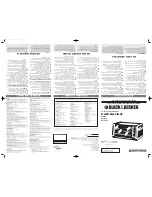
21
Cast Iron Condensing Boilers – Installation Manual
Cast Iron Condensing Boilers – Installation Manual
HEATING SYSTEM PIPING
General Piping Requirements
All heating system piping must be installed by a qualified
technician in accordance with the latest revision of the
ANSI/ASME Boiler and Pressure Vessel Code, Section IV.
Where required, the piping must comply with ANSI/
ASME CSD-1, Standard for Controls and Safety
Devices for Automatically Fired Boilers.
All applicable local codes and ordinances must also be
followed. A minimum clearance of 1in, 25 mm must be
maintained between heating system pipes and all
combustible construction. All heating system piping must
be supported by suitable hangers, not the boiler. The
thermal expansion of the system must be considered
when supporting the system. A minimum system
pressure of 20 psig, 138 kPa must be maintained at
boiler operating conditions. For glycol systems, a
minimum system pressure of 30 psig, 207 kPa must be
maintained at boiler operating conditions.
Boiler Piping Connections
The supply and return connections should be sized to
suit the system, see Table 7.
Table 7 - Supply & Return Pipe Sizing
System Cleaning & Flushing:
Prior to
commissioning the boiler(s), the piping/
system must be cleaned and flushed to
prevent contaminants from settling back
into the boiler and fouling the heat
exchanger.
Isolate the boiler from the system prior to the
cleaning process. Fill the system with water,
add the cleaning solution and follow the
solution manufacturer’s instructions. Once
clean, refill the system with clean water as
specified in the Water Treatment section.
Water Treatment
This boiler was designed to operate in a closed loop
heating system. System fill water must not contain more
than 500 ppm of total dissolved solids and no greater
than 300 ppm hardness. Suspended solids such as
Magnetite, Iron Oxides must be flushed from the system
prior to commissioning the boiler(s). The PH level must
be within the 6.5-11 range. Where required, the system
must be protected by the addition of a corrosion inhibitor
per the chemical supplier’s instructions.
For systems requiring glycol for freeze protection use a
glycol/water mix that prevents foaming. Air entrapped
within foam significantly decreases heat transfer and
can result in damage to the sections. Products such
as DOWFROST, DOWTHERM, UCARTHERM or an
equivalent product must be used to ensure proper
protection to the boiler.
The water used for dilution of concentrated heat transfer
fluids must be distilled, de-ionized, or equivalently clean
as stated above. De-ionized water by itself can be
aggressive torwards many metals, but is perfectly safe
when used for dilution of DOWFROST, DOWTHERM or
UCARTHERM as specified by the manufacturer.
FAILURE TO ENSURE PROPER WATER QUALITY
CAN RESULT IN DAMAGE TO THE BOILER(S)
VOIDING THE WARRANTY.
Water Meter
Make-up water introduced into a closed system due
to system leaks can negatively affect the long term
reliability of the heating sytem resulting in abnormal
boiler water quality. It is recommended that a water
meter be installed in the system make-up line. If make-
up is recorded, the leaks must be found and repaired.
Pump Requirements
This boiler requires a continuous minimum water flow
for proper operation. The system pump must be sized
to overcome the head loss of the boiler and the heating
system in order to achieve the required temperature
rise. If the system contains hydronic antifreeze this must
be considered when sizing the pump. The temperature
rise across the boiler must never exceed
100°F
, 55.6°C.
Low Water Cutoff
Each KN boiler comes equipped with a factory installed
low water cutoff.
Expansion Tank & Air Separator
An expansion tank or other means to control thermal
expansion must be installed in the heating system. It
is recommended the expansion tank is installed close
to the boiler on the suction side of the pump. An air
scoop and automatic air vent must also be installed to
eliminate air trapped in the system.
Model
Size
Supply
Size
Return
Size
6+
3" NPT
3" NPT
10+
3" NPT
3" NPT
16+
3" NPT
3" NPT
20+
3" NPT
3" NPT
26+
4" NPT
4" NPT
30+
4" NPT
4" NPT
40+
4" NPT
4" NPT
Summary of Contents for KN Series
Page 45: ...45 Cast Iron Condensing Boilers Installation Manual Figure 24 KN6 10 16 20 26 30 and 40 ...
Page 46: ...46 Cast Iron Condensing Boilers Installation Manual Figure 25 KN6 10 16 20 26 30 and 40 ...
Page 47: ...47 Cast Iron Condensing Boilers Installation Manual Figure 26 Gas Train Drain Pan ...
Page 55: ...55 Cast Iron Condensing Boilers Installation Manual ...
















































